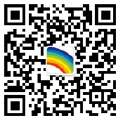A collaborative research team comprising Academician Zheng Wanhua from the Institute of Semiconductors, Chinese Academy of Sciences; Peng Chao from the School of Electronic Engineering, Peking University; and Academician Yuri Kivshar from the Australian National University has recently published groundbreaking findings in Nature Nanotechnology. The study successfully observed the phenomenon of collective guided-mode resonance (CGR) triggered by boundary momentum scattering. Leveraging asymmetric pumping technology, the team broke mirror symmetry, thereby achieving chiral laser emission. They innovatively designed an active photonic crystal with a circular boundary. Under the influence of circular boundary scattering, multiple photonic crystal guided modes coupled to form a collective guided-mode resonance state. By further employing asymmetric pumping technology, the team was able to achieve single-mode lasing of chiral vortex lasers and observed vortex beams with zero central intensity in real space. This remarkable achievement offers a novel approach to constructing chip-scale vortex lasers, holding promising applications in quantum/photonic computing, sensing, micro-manipulation, and chiral identification.

-
 C114 Communication Network
C114 Communication Network -
 Communication Home
Communication Home


